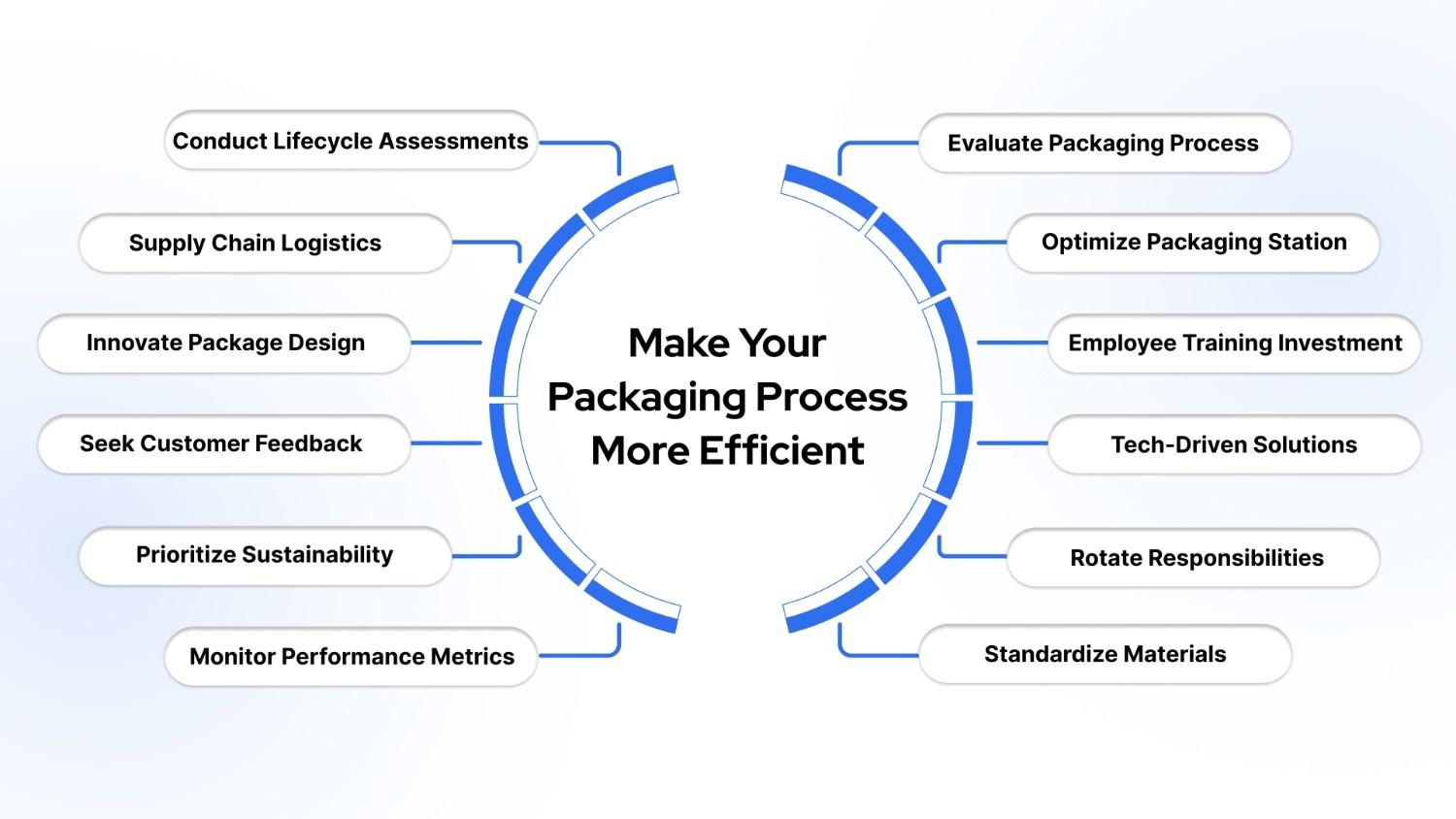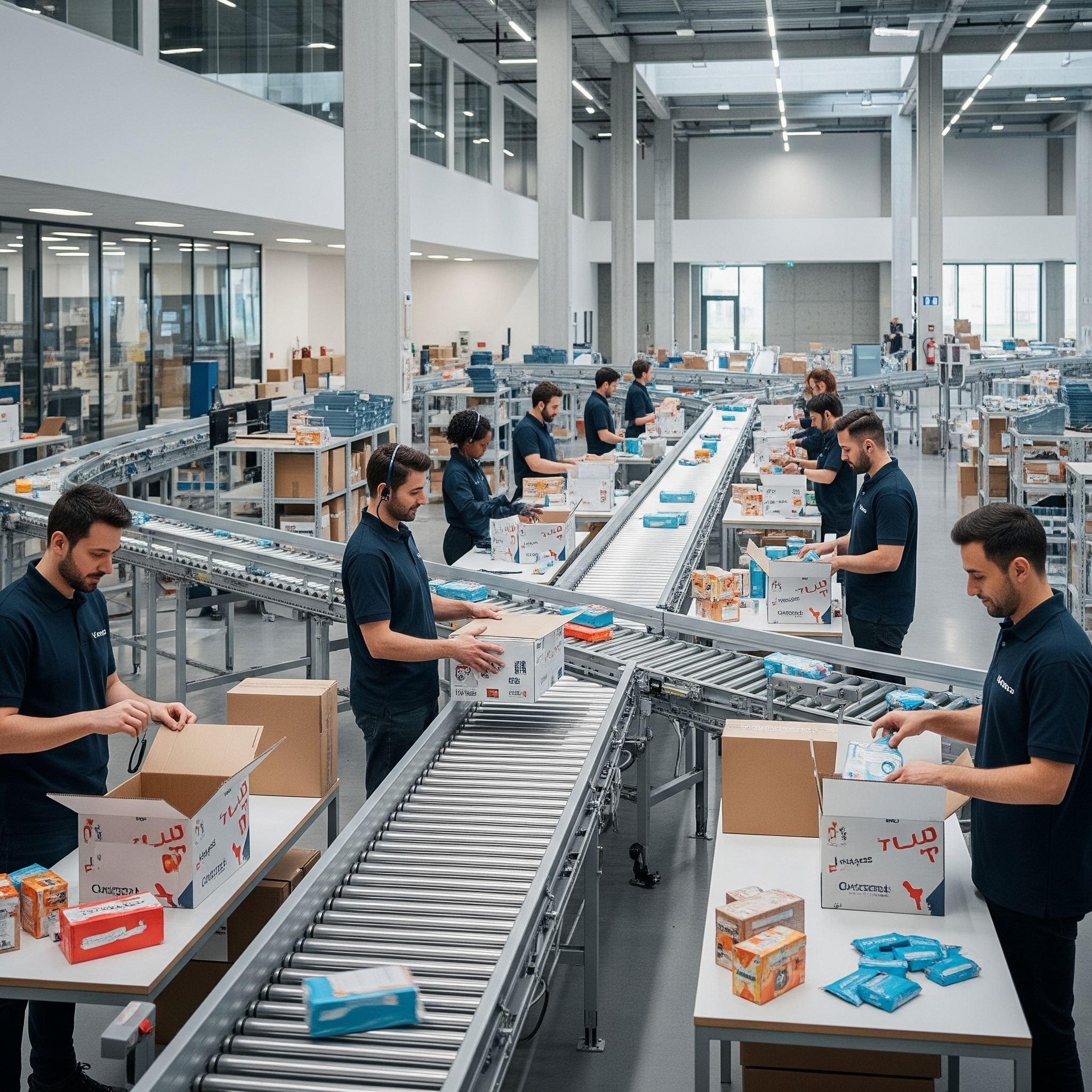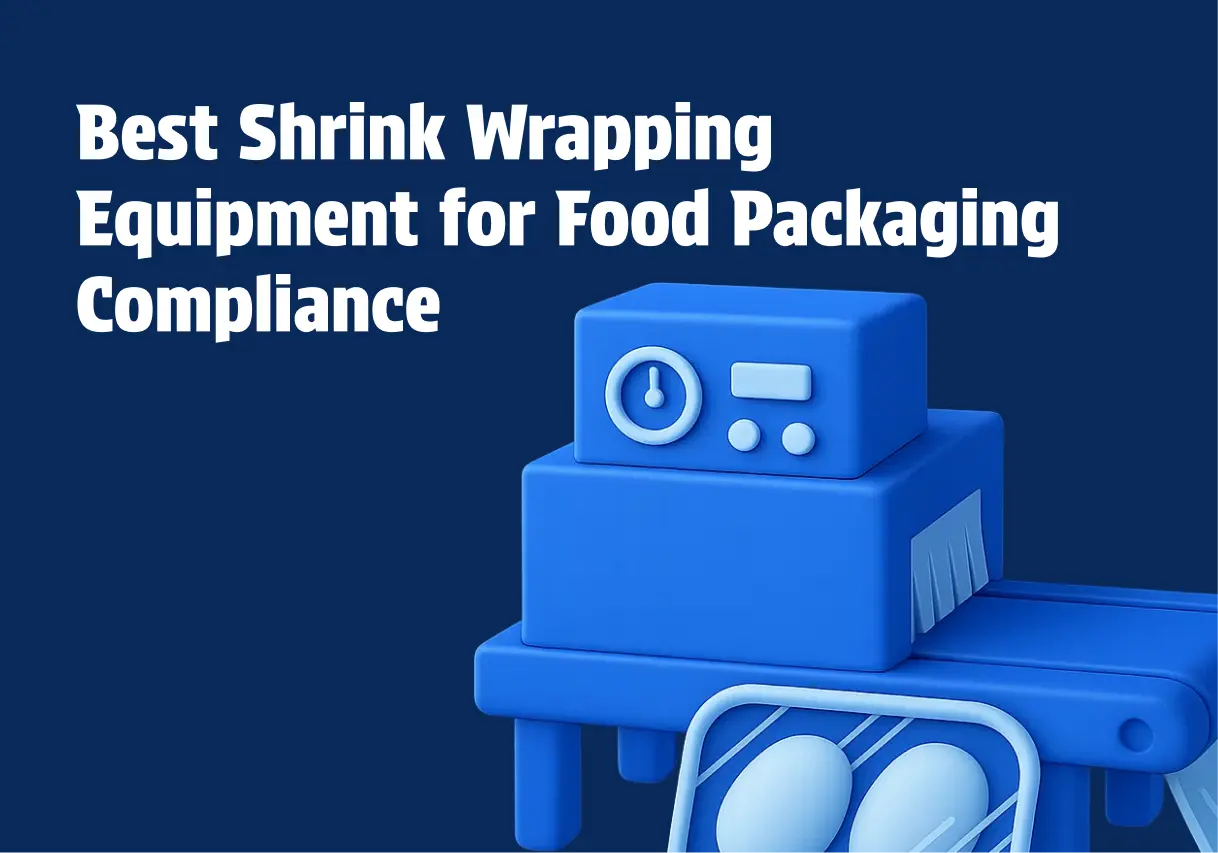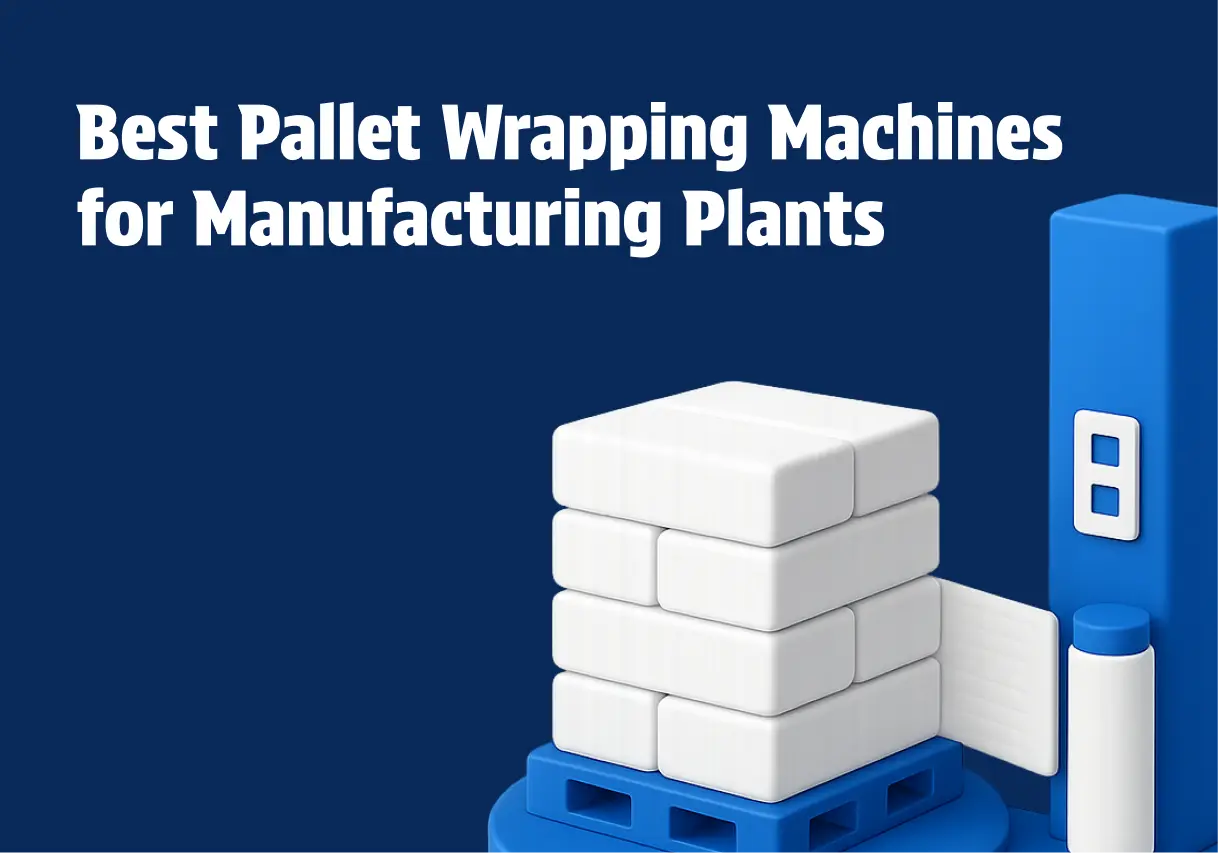Packaging inefficiencies can quickly snowball into serious problems like longer processing times, higher labor costs, and even increased risk of product damage. If you’ve noticed your packaging process slowing down or becoming more expensive, you're not alone. Many businesses face the same struggles, especially when relying on outdated methods or mismatched equipment.
In this blog, we'll explore actionable ways to improve packaging efficiency and productivity. We'll cover how to assess and optimize your current processes, choose the right packaging equipment, and implement practices that can save time and reduce costs. Let’s get started.
What is Packaging Efficiency?
Packaging efficiency refers to how effectively a business uses resources in the packaging process, focusing on reducing waste, minimizing costs, and improving overall sustainability.
Why Packaging Efficiency is Crucial
Improving packaging efficiency is essential for boosting profitability and enhancing overall business operations. Here’s why it matters:
- Cost Reduction: Streamlining packaging reduces material usage and labor costs, eliminating unnecessary overhead and directly impacting your bottom line.
- Increased Fulfillment Speed: An efficient packaging process allows faster order fulfillment, meeting customer demands more quickly and increasing throughput.
- Optimized Storage and Retrieval: Efficient packaging maximizes warehouse space, speeding up stock retrieval and reducing handling time.
- Minimized Packaging Waste: Using the right materials and sizes minimizes waste, lowering disposal costs and supporting sustainability.
- Smarter Inventory Management: Adjusting box sizes and packaging solutions improves inventory control, reducing overstock and unnecessary material costs.
- Improved Order Handling: Streamlined packaging simplifies order management, reducing errors and improving shipping accuracy.
- Holistic Process Improvement: Analyzing a holistic view of your packaging process helps identify inefficiencies and bottlenecks, driving improvements across all stages, from material selection to delivery.
- Tailored Solutions: Expert consultants can provide customized strategies, whether adjusting box designs or upgrading materials, ensuring packaging aligns with your business needs.
- Flexibility for Growth: Streamlined packaging systems easily adapt to your evolving needs, whether you're scaling operations or expanding your product line.
Packaging efficiency drives cost savings and enhances customer satisfaction, making it a key factor in maintaining competitive advantage and operational success.
Next, let’s explore some practical strategies that can help streamline your packaging process.
Tips for Making Your Packaging Process More Efficient

To improve packaging efficiency and productivity, consider the following practical strategies to enhance your team's performance:
1. Evaluate Your Current Packaging Process
Analyze your packaging workflow to identify inefficiencies, such as material use or bottlenecks in employee productivity. Examining every part of the process will help you pinpoint specific areas for improvement and guide you toward smarter packaging solutions.
For example, our Storopack Process offers a detailed, step-by-step approach to enhancing your packaging. We analyze your current workflows, materials, and costs, then develop tailored solutions that optimize efficiency, reduce costs, and seamlessly integrate with your existing operations.
2. Optimize Your Packaging Station
Ensure easy access to supplies, tools, and equipment to reduce unnecessary movement. Incorporating technology, like voice command picking systems, can also speed up processes and help you collect valuable data for ongoing improvement.
Flexible Protective Packaging solutions, like foam and paper cushioning, streamline your packaging station by offering easy-to-access, customizable materials that reduce waste and improve workflow efficiency.
3. Invest in Employee Training and Skill Development
Well-trained employees can significantly boost efficiency. Regular training sessions enhance skills and reduce errors, leading to faster, more accurate packaging. Encourage team feedback and promote a culture of continuous learning.
4. Integrate Technology into Your Packaging Process
Automate repetitive tasks like sealing boxes and applying labels. Technology can minimize human error and speed up the process. Inventory management software ensures seamless stock tracking and avoids material shortages.
5. Rotate Employee Responsibilities
Cross-train your team in various packaging tasks to increase versatility and problem-solving skills. This approach promotes collaboration and helps identify inefficiencies in the process.
6. Standardize and Consolidate Packaging Materials
Streamlining materials, such as using uniform boxes and fillers, reduces complexity and simplifies inventory management. Standardized packaging also allows for quicker assembly and greater cost savings from bulk purchasing.
7. Monitor Performance Metrics
Track key performance indicators (KPIs) like order-processing times, error rates, and customer satisfaction. Regularly reviewing this data allows you to make informed decisions on how to maintain or improve packaging efficiency.
8. Prioritize Sustainability
Sustainable packaging practices benefit the planet and reduce shipping costs. Use eco-friendly materials that reduce your carbon footprint and improve your company’s reputation.
Protective Paper Rolls & Sheets offer a sustainable and flexible solution, ideal for eco-conscious businesses looking to improve efficiency while maintaining high-quality protection. With options that include recycled content, curbside recyclability, and eco-friendly features, paper packaging reduces environmental impact without compromising performance.
9. Seek Customer Feedback
Understand how your packaging affects customer experience. Collect feedback on packaging quality, product protection, and ease of unboxing. Use this input to make informed decisions about future packaging strategies.
10. Innovate Package Design for Efficiency
Design packaging that maximizes space utilization, protects products, and enhances ease of handling. Utilize design software to optimize your packaging layout for efficiency.
11. Streamline Supply Chain Logistics
Work with suppliers and logistics partners to consolidate shipments and optimize inventory management. Implementing Just-In-Time (JIT) systems reduces waste and transportation costs.
12. Conduct Lifecycle Assessments for Continuous Improvement
Regularly evaluate the environmental impact of your packaging materials and processes. Consider opportunities to substitute materials or improve processes for sustainability while maintaining efficiency.
Following these tips helps improve your packaging processes and achieve greater efficiency.
Now that you have the tips and resources to improve your packaging, let’s understand how John Maye Company can help you achieve optimized packaging efficiency every step of the way.
Experience Optimized Packaging Efficiency with John Maye Company

At John Maye Company, we specialize in delivering customized solutions that make your packaging processes efficient and cost-effective. Here's how we can help:
- Expert Consultation: Our experienced team is ready to assess your packaging needs, offering personalized recommendations and seamless integration to improve workflow efficiency.
- Comprehensive Packaging Solutions: We provide a wide range of products, including stretch wrap machines, protective paper rolls, and other innovative packaging materials, all tailored to meet your specific needs.
- Automation to Boost Efficiency: Automate your packaging process with machines like the Conveyorized Twin Station Stretch Wrapper (CTS), improving speed, consistency, and reducing labor costs.
- Sustainable Options: Choose eco-friendly solutions such as Protective Paper Rolls & Sheets, made with recycled content and curbside recyclability, reducing both your environmental footprint and packaging costs.
- Custom Packaging Solutions: We offer custom packaging solutions designed to provide optimal protection for your products while maximizing operational efficiency.
- Ongoing Support and Maintenance: We don’t just sell products; we provide long-term support with maintenance, parts, and expert guidance to keep your systems running smoothly.
Let John Maye Company help you streamline your packaging, reduce waste, and improve your bottom line. Contact us today for tailored packaging solutions designed for your business’s needs!
FAQs
1. How can I tell if my packaging process needs improvement?
If you’re noticing longer processing times, more errors, or rising costs, it's likely time to evaluate your process. Track key metrics like packaging time, material waste, and ask for feedback from your team to identify bottlenecks.
2. What are the easiest ways to make packaging more efficient?
Start by organizing your packaging station to minimize movement and streamline processes. Incorporating technology like automated machines and inventory management systems can also make a big difference. Regular employee training helps boost speed and accuracy.
3. Can automation really improve my packaging speed?
Yes. Automated machines can handle repetitive tasks like sealing boxes, labeling, and wrapping, which speeds up the entire process. It reduces human error, allowing your team to focus on more complex tasks.
4. How do I know which packaging materials are best for my business?
The best materials depend on your products. For fragile items, you might need cushioning materials. For bulkier items, consider sturdier boxes. It’s essential to balance cost, protection, and sustainability when making your choice.
5. What role does employee training play in packaging efficiency?
Well-trained employees are more efficient and make fewer mistakes. Regular training keeps your team updated on new methods or technologies, and ensures they work in a more organized and consistent way, speeding up the entire packaging process.
6. How can I make my packaging process more sustainable without breaking the bank?
Start by using recyclable, biodegradable, or lightweight materials that reduce waste. Right-sizing your packaging also cuts down on material use and shipping costs. Buying materials in bulk can save money while supporting more eco-friendly practices.

Blogs

Best Shrink Wrap Machines for Your Business
Discover the best shrink wrapping equipment for food packaging compliance. Conflex offers high automation. Increase efficiency now!

Top Banding Machines for Packaging Solutions
Find top banding machines for small to mid-size packaging lines! Discover flexible automation options and sustainability features. Optimize efficiency today!

Best Pallet Wrapping Machines for Manufacturing Plants 2025
Explore the best pallet wrapping machines for manufacturing plants in 2025. Learn how to choose, compare key models, and reduce wrapping costs.
